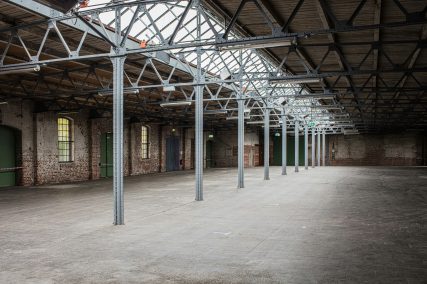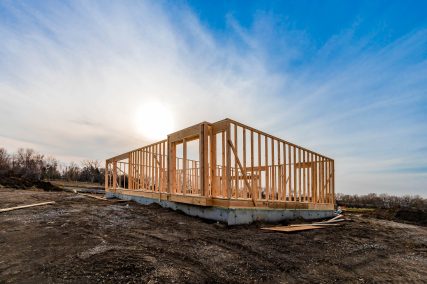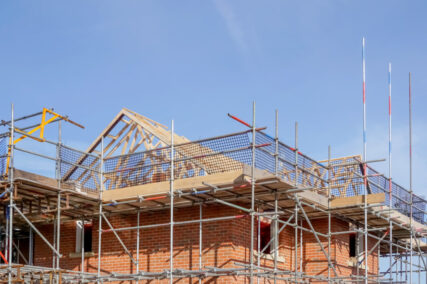The Dos and Don’ts of Industrial Property Investment
In June 2024, Savills research estimated that the UK’s commercial investment volume had reached £15.7bn by the end of May 2024. The interest for industrial property investment has increased in recent years, largely driven by the explosive growth of online shopping and the need for storage and distribution spaces. Properties such as warehouses and factories are being snapped up as they can offer clients attractive returns and asset appreciation long-term.
Like any property sector, industrial property investment requires careful consideration and awareness of the benefits and risks involved. If you’re thinking about investing in industrial property, these are some important things to consider.
Do: Research the market thoroughly
Understanding the market is crucial when investing in property. The need for large industrial spaces across the country is influenced by the demand from online shopping platforms, space for manufacturing and the emergence of “last mile” delivery centres near cities.
Studying demand trends nationwide can help pinpoint regions with high growth potential. For instance, industrial properties close to transportation networks like roads and ports work well for warehouses and are often highly coveted due to their lucrative investment opportunities. Keeping up to date with regional vacancy rates, rental yields and economic trends can provide investors with a valuable competitive advantage.
Don’t: Overlook the significance of location.
Industrial properties are typically prized for their practicality rather than their visual attractiveness, but the location plays a crucial role in their overall value and desirability. Industrial spaces situated close to highways, transportation centres and bustling communities tend to be more sought after due to their convenience and accessibility. What’s more, if the warehouse has flexibility to cater to different tenants’ needs and preferences, it’s more likely to attract a diverse range of tenants for regular occupation.
On the other hand, properties located in secluded or poorly connected areas may face challenges in securing competitive rental rates or attracting reliable tenants. Having limited access and visibility can impact an investment, especially if unoccupied. It’s important to note that the location also impacts the future resale value of industrial properties; those situated in less desirable locations are less likely to appreciate when compared against properties in high demand areas.
Do: Assess tenant interest and longevity
An important objective of investing in property is to ensure you receive a steady rental income flow from trustworthy and reliable tenants. Consider properties that attract industries with long term demand, like e-commerce and logistics companies. To lock in client longevity, opt for longer lease agreements with tenants from these types of sectors to maintain a revenue stream.
When assessing tenant interest levels take into account their financial stability and future prospects. Factors such as these will influence their probability of staying long-term, generating good returns on your investment.
Don’t: Overlook maintenance and compliance
Just like owning a house, industrial properties can be costly to maintain, especially older buildings that need structural reinforcements. The importance of considering compliance costs cannot be overlooked by investors either. Especially when it comes to health and safety regulations, as well as environmental standards which are rigorously monitored in the UK. For example, making sure manufacturing properties meet pollution controls and waste disposal regulations.
It’s vital to include these expenses in your financial forecasts to prevent any unforeseen issues that could affect your bottom line. To help prepare for this, carefully check the property ahead of investment and come up with a maintenance schedule to avoid unexpected costs further down the road.
Do: Explore the growth potential of industrial investments
One appealing aspect of bricks and mortar property is its historical robustness and ability to increase in value over time. Especially as the need for storage and distribution centres has increased steadily, whilst the supply struggles to match this demand.
Savvy investors are also exploring opportunities to reconfigure a property by altering the layout to cater to more than one tenant. The beauty of industrial properties is that they typically offer flexibility for making these kinds of improvements.
Don’t: Underestimate the impact of economic cycles
Commercial properties can be influenced by economic changes, just like any other type of property. As previously mentioned, the rise of online shopping has led to a need for industrial spaces however if there is an economic slowdown, the demand from tenants and the amount of rent generated could be affected. Industries like manufacturing and logistics are especially vulnerable to changes in the economy.
Investors should consider diversifying their investment portfolio and think ahead by setting aside funds for vacant periods whilst also being prepared for fluctuations of property values.
Do: Take advantage of long-term lease structures
Structuring a long lease is one way for investors to maximise their investment value over time. Typically, industrial rental agreements range from 5 to 15 years in length. Long lease periods are attractive to investors because they ensure a consistent and foreseeable income. They can also lead to reduced turnover expenses as investors can avoid costs associated with vacancies and re-leasing efforts.
Don’t: Underestimate the significance of financing
A financial strategy is crucial when investing in industrial properties. Many investors look to finance their investment through the use of debt. That way they can retain liquidity and explore diversifying their investment portfolio by investing in more than one property with little input equity.
If you are looking at loans for investment, using calculations to estimate cash flow will be vital evidence for the lender. They’ll also want to see how you’ve factored in events – like vacancies or repairs – that could affect rental income, and how to plan to exit the loan at the end of the term (typically through sale or refinancing). Consulting with a property finance adviser who is knowledgeable in this area will be key to success. Their experience will be invaluable, helping you develop a rounded and financially sound investment plan.
Do: Think about sustainability and the importance of energy efficiency
With a growing focus on sustainability, the demand for eco properties is rising. Industrial properties equipped with features like better insulation, solar panels and energy saving lighting are appealing to tenants with social consciousness.
Additionally, anticipated regulations might introduce energy efficiency standards for industrial buildings, so making sustainable improvements now could safeguard your property’s future.
Financing industrial property investments
Industrial property opportunities continue to attract investors due to their long-term growth prospects as the need for logistics and warehouse spaces continues to thrive in the market. However, to succeed in this sector it is crucial to assess market conditions thoroughly and have a deep understanding of factors including location, tenant demand and economic trends. By adhering to these guidelines, investors can decrease the associated risks and improve the prospect of high returns.
If you are considering exploring the prospect of industrial property investment, it’s always a good idea to seek advice from seasoned property and financial experts to make sure your investment plan is in line with your financial objectives long-term. The team at Wharf Financial have been assisting clients with their investment plans for many years. Whether you’re a new investor, seasoned professional or a portfolio landlord, we can help you obtain finance for your needs. Contact the team today.












